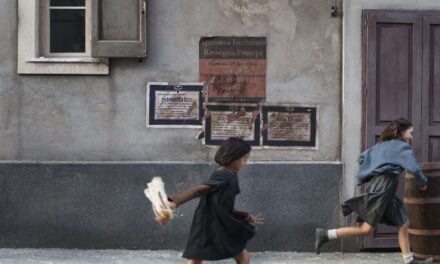Edited by Cortland Rankin (Bowling Green State University) and Brady Fletcher (University of Rochester)
The portmanteau “warscape” that forms the title of this edited volume suggests a complex linkage between war, often thought of in purely anthropocentric terms, and the physical environment. On one hand, warfare is inescapably shaped by the environmental contexts in which it occurs. Geography, topography, biology, hydrology, and meteorology all have significant strategic and tactical implications as advantages to be exploited or as obstacles to be overcome. War also has the potential to radically transform any environment it touches, from densely populated cities to remote wildernesses. It can reduce buildings to rubble, disable critical infrastructural systems, annihilate sites of cultural memory, and remake, pollute, and poison the land, sea, and air. The environmental impact of war and militarization more broadly extends well beyond the combat zone too, from the extraction of natural resources and the disposal of toxic waste products to the strategic mobilization of agriculture and the construction of vast military bases. The militarization of environments can proceed even in the absence of active conflict, as is evidenced in recent decades by the reconfiguration of so-called high-value sites – from financial districts, government buildings, and sports stadiums to pipelines, cell towers, and grain storage facilities – as potential targets in need of securing. And, of course, the environmental after-effects of war and military operations/occupations linger long after the fighting stops, with profound ramifications for both recovery and remembrance. Indeed, ecocidal violence can be understood as ongoing, often invisible, and sometimes even far outside of what human beings might consider spaces of war or conflict.
As the term “warscape” implies, however, this book is not only about the intersection of war and the environment; it also centers a third crucial component – mediation. From film and television to social media and video games, audiovisual media can provide unique means for documenting, narrativizing, propagating, and critiquing militarized environments. At the same time, media technologies mobilized for the purposes of sensing, surveillance, targeting, etc. can also actively shape the outcomes of war. At the heart of this book is the convergence of war, environment, and media, each of which will be broadly defined. Although war will undoubtedly be a primary focus of the book, it will also acknowledge a wide range of military activities beyond active warfare, including less explicit forms of militarization as well as the ideology of militarism itself. “Environment” as a concept will also be left intentionally broad to include both built, social spaces as well as non-human ecological worlds. Lastly, the definition of “media” will remain open to account for the range of ways in which militarized environments can be mediated.
Avenues of inquiry may include, but are not limited to:
-
Representations of urban/suburban/rural spaces and communities at war in film and television, social media, video games, or other audiovisual media.
-
Space and place-based studies of location shooting in war film/TV/video game production.
-
Media and the militarization of infrastructure.
-
Phenomenological/experiential accounts of militarized environments.
-
The role of militarized technologies in sensing, surveilling, and targeting environments.
-
The relationship between particular forms of audiovisual media and the broader visual cultures that inform their representations of militarized environments.
-
Militarized environments and cultural memory.
-
Documenting the environmental impacts of war both within and outside conflict zones.
-
Environmental justice perspectives on war that account for disproportionate impacts on the basis of race, class, and/or gender.
-
Ecocritical approaches to war film/TV/social media/video games.
-
Media that strive to offer ecocentric perspectives in order to reorient or reframe common anthropocentric notions of conflict and war.
-
Rethinking war through ecological elements as media (e.g., radiation, oil, air, sound).
The book will be submitted to Rutgers University Press’ War Culture series. Read more about the series here:
https://rutgersuniversitypress.org/search-results-grid/?series=war-culture.
Chapters should be at most 8,500 words, inclusive of notes.
Interested contributors should submit a 300-word abstract of your proposed chapter and a 100-word bio to Cortland Rankin (rankicw@bgsu.edu) and Brady Fletcher (brady.fletcher@rochester.edu) by February 16, 2024. Authors will be informed of the selection by early March. The due date for chapter drafts will be July 1, 2024, with revision requests returned to you by early August 2024 and your revisions due back by October 1, 2024. Our current goal is to have the volume finalized and sent to the publisher by late 2024, with the book expected to be published in 2025. Inquiries should be directed to the email addresses above.





